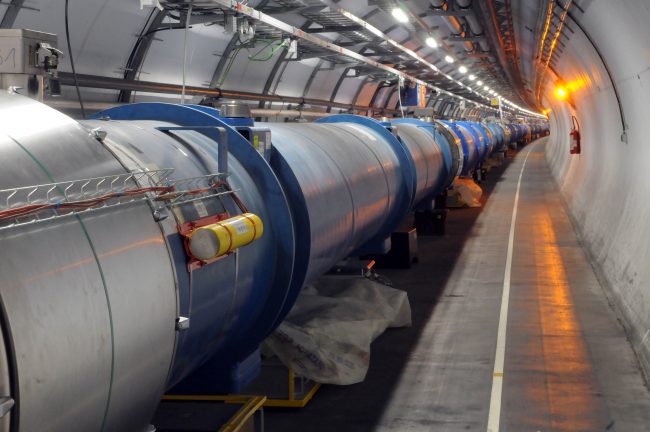The Large Hadron Collider (LHC), the world’s most powerful particle accelerator, is set to receive a significant helping hand from Canada as it undergoes major performance-boosting upgrades.

Federal science minister Kirsty Duncan announced Monday that the Canadian government will invest $10 million towards building new particle accelerator components for the machine, with Canada’s own particle accelerator centre, TRIUMF, chipping in with a $2 million in-kind contribution.
Built by the European Organization for Nuclear Research (CERN) as part of a massive international collaboration, the Large Hadron Collider is designed to answer fundamental questions of physics.
It does this by smashing together sub-atomic particles at close to the speed of light, enabling scientists to explore the existence of particles predicted by physics theories, discover new particles and even create micro black holes to uncover parallel universes and unexplored dimensions.

The particles are accelerated along a 27-km tunnel situated over 100 metres below the French-Swiss border near Geneva, making the Large Hadron Collider the single largest machine ever built.

Get daily National news
The facility has already provided several scientific breakthroughs, most notably the discovery of the Higgs boson, a sub-atomic particle described as a crucial building block of our universe.
READ MORE: Physicists say they are now confident they have discovered the long-sought Higgs boson
Canada’s $12 million contribution will go towards building sophisticated cryogenic modules to house the Large Hadron Collider’s “crab cavities,” electromagnetic cavities that can rotate batches of particles before they collide, thereby increasing the machine’s capacity.
These crab cavities need to be able to maintain an extremely cold temperature so that researchers can exercise better control over the particles before they collide, which is where Canada’s cryo-modules come in.
READ MORE: Large Hadron Collider taken offline by a weasel
TRIUMF, which counts 19 Canadian universities among its members, said in a statement that Canada’s “coldboxes” would tackle a “mission-critical” challenge for the Large Hadron Collider’s upgrades.
“Canada is a world-leader in the cryo-module technology that will surround the cavities, and will leverage both TRIUMF’s unique network of expertise and the capacity of Canadian industry to design, fabricate, and deliver the crucial upgrade components over the next five years,” TRIUMF said in a press release.
Duncan said the investment will boost Canada’s reputation as a “global leader” in the field of particle physics.
“To put it plainly, Canadian science will be at the heart of this global experiment to unravel the mysteries of the universe.”








Comments